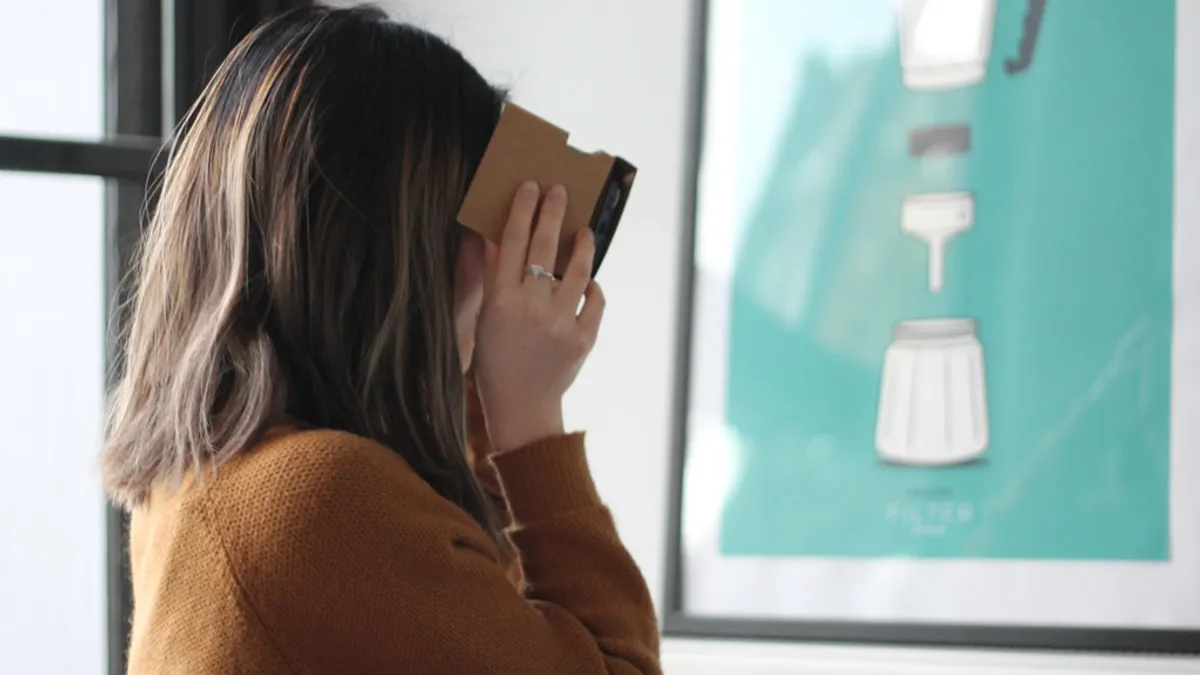Dive Brief:
- An infographic from Jeremy Bailenson of Stanford University’s Virtual Human Interaction Lab provides a number of invaluable virtual reality (VR) safety tips schools should consider when implementing the technology, District Administration reports.
- Virtual reality experiences should be scaled for the size of the room they're occurring in, and safety hazards must be cleared before the technology is used, with a second person acting as a spotter to further ensure safety.
- Additionally, the time spent in VR sessions should be limited, and further safety measures can include making sure the user is seated if walking isn't necessary to the experience.
Dive Insight:
For schools and districts that can afford it, VR can greatly enrich the learning experience by immersing students in scenarios they wouldn't otherwise have access to, whether transporting them to the past or just the other side of the present-day world. The technology's full potential has still barely been tapped, but with that power also comes additional responsibility.
When a person is using a VR headset, they're immersed visually and sonically in the virtual world being presented to them. In a full-room experience, where walking is necessary, one can imagine the sort of hazards this might create. Multiple students using VR at one time could, for example, lead to injury from students bumping into each other. Even in an empty room, they might still bump into a wall or desk or some other object, hence the need for a second person serving as a "spotter" while they're using the device. Others might experience motion sickness.
Bailenson has also done research on the effects of VR on children and how they process the experience, as detailed in this video.














